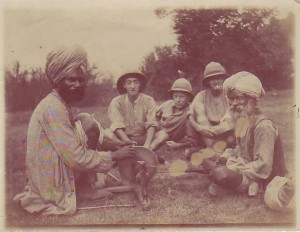 My favorite theory about the origin of the poses I teach in yoga class is that they are adapted from the British military training from the late 1800’s. I don’t know where I first heard this but I like the idea of it mainly because I am confused about what it means to be a “yoga” teacher.
My favorite theory about the origin of the poses I teach in yoga class is that they are adapted from the British military training from the late 1800’s. I don’t know where I first heard this but I like the idea of it mainly because I am confused about what it means to be a “yoga” teacher.
I am no yogi. I teach something called yoga but I don’t know that much about it. I am very much steeped in my middle class Jew from Brooklyness. But I love teaching—more than I ever thought I would or could. It just seems odd that I teach something with a name that attaches to a set of beliefs that I don’t necessarily adhere to or even understand—it can be confusing.
Yoga and yogis go way back in time and storytelling but it was the scholar Patanjali who codified the eight limbed path of yoga some 2000 years ago in his Yoga Sutras. He lists asana as the third step in a fairly steep climb to enlightenment.
He doesn’t talk about poses at all. Only one sutra mentions sitting, though it is a good one (2:46 Shtira Sukham Asanam- the seat should be steady and comfortable). Patanjali’s concern did not seem to be the physical body or plane.
That was it for about 1500 years. My dates might be off but sometime in the 1500’s the Nath yogis led by the guru Goraknath, created the Hatha Yoga Pradipika, which includes reference to a number of poses, mostly shapes to work on the seat of meditation but also a couple of backbends and arm balances.
There were another couple of texts over the next few hundred years that added some more poses but nothing like our modern vinyasa. When it comes to modern yoga, and Surya Namaskar, it is as likely as not that you are looking at a reincarnation of jumping jacks and squat thrusts.
This is all well and good. Things evolve. Though I do think it is important not to put too much importance in the physical practice. I used to believe that if only I could put my feet behind my head I would be a better person. Then, lo and behold, I got my feet behind my head but I was still the same old me.
